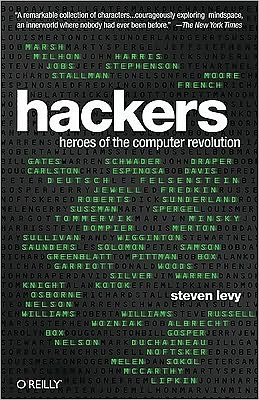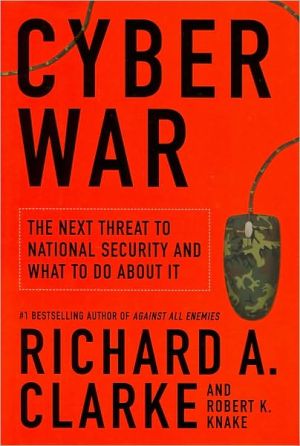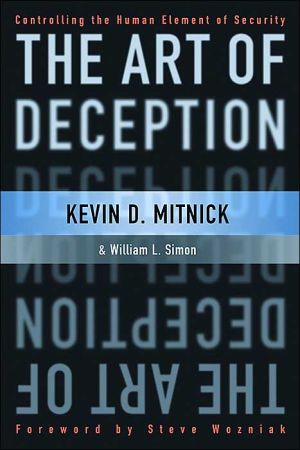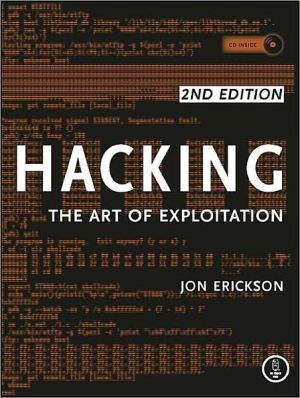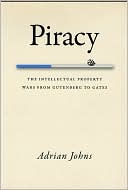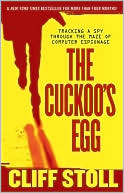Hackers: Heroes of the Computer Revolution
This 25th anniversary edition of Steven Levy's classic book traces the exploits of the computer revolution's original hackers — those brilliant and eccentric nerds from the late 1950s through the early '80s who took risks, bent the rules, and pushed the world in a radical new direction. With updated material from noteworthy hackers such as Bill Gates, Mark Zuckerberg, Richard Stallman, and Steve Wozniak, Hackers is a fascinating story that begins in early computer research labs and leads to...
Search in google:
Technology journalist Levy creates a unique portrait of computer hackers as brilliant revolutionaries who should be credited for many of the breakthroughs in the high-tech world.
Chapter 1: The Tech Model Railroad Club\ Just why Peter Samson was wandering around in Building 26 in the middle of the night is a matter that he would find difficult to explain. Some things are not spoken. If you were like the people whom Peter Samson was coming to know and befriend in this, his freshman year at the Massachusetts Institute of Technology in the winter of 1958-59, no explanation would be required. \ Wandering around the labyrinth of laboratories and storerooms, searching for the secrets of telephone switching in machine rooms, tracing paths of wires or relays in subterranean steam tunnels . . . for some, it was common behavior, and there was no need to justify the impulse, when confronted with a closed door with an unbearably intriguing noise behind it, to open the door uninvited. And then, if there was no one to physically bar access to whatever was making that intriguing noise, to touch the machine, start flicking switches and noting responses, and eventually to loosen a screw, unhook a template, jiggle some diodes and tweak a few connections. Peter Samson and his friends had grown up with a specific relationship to the world, wherein things had meaning only if you found out how they worked. And how would you go about that if not by getting your hands on them?\ It was in the basement of Building 26 that Samson and his friends discovered the EAM room. Building 26 was a long glassand-steel structure, one of MIT's newer buildings, contrasting with the venerable pillared structures that fronted the Institute on Massachusetts Avenue. In the basement of this building void of personality, the EAM room. Electronic Accounting Machinery. A room that housed machineswhich ran like computers.\ Not many people in 1959 had even seen a computer, let alone touched one. Samson, a wiry, curly-haired redhead with a way of extending his vowels so that it would seem he was racing through lists of possible meanings of statements in mid-word, had viewed computers on his visits to MIT from his hometown of Lowell, Massachusetts, less than thirty miles from campus. This made him a "Cambridge urchin," one of dozens of science-crazy high schoolers in the region who were drawn, as if by gravitational pull, to the Cambridge campus. He had even tried to rig up his own computer with discarded parts of old pinball machines: they were the best source of logic elements he could. find.\ Logic elements: the term seems to encapsulate what drew Peter Samson, son of a mill machinery repairman, to electronics. The subject made sense. When you grow up with an insatiable curiosity as to how things work, the delight you find upon discovering something as elegant as circuit logic, where all connections have to complete their loops, is profoundly thrilling. Peter Samson, who early on appreciated the mathematical simplicity of these things, could recall seeing a television show on Boston's public TV channel, WGBH, which gave a rudimentary introduction to programming a computer in its own language. It fired his imagination: to Peter Samson, a computer was surely like Aladdin's lamp-rub it, and it would do your bidding. So he tried to learn more about the field, built machines of his own, entered science project competitions and contests, and went to the place that people of his ilk aspired to: MIT. The repository of the very brightest of those weird high school kids with owl-like glasses and underdeveloped pectorals who dazzled math teachers and flunked PE, who dreamed not of scoring on prom night, but of getting to the finals of the General Electric Science Fair competition. MIT, where he would wander the hallways at two o'clock in the morning, looking for something interesting, and where he would indeed discover something that would help draw him deeply into a new form of creative process, and a new life-style, and would put him into the forefront of a society envisioned only by a few science-fiction writers of mild disrepute. He would discover a computer that he could play with.\ The EAM room which Samson had chanced on was loaded with large keypunch machines the size of squat file cabinets. No one was protecting them: the room was staffed only by day, when a select group who had attained official clearance were privileged enough to submit long manila cards to operators who would then use these machines to punch holes in them according to what data the privileged ones wanted entered on the cards. A hole in the card would represent some instruction to the computer, telling it to put a piece of data somewhere, or perform a function on a piece of data, or move a piece of data from one place to another. An entire stack of these cards made one computer program, a program being a series of instructions which yield some expected result, just as the instructions in a recipe, when precisely followed, lead to a cake. Those cards would be taken to yet another operator upstairs who would feed the cards into a "reader" that would note where the holes were and dispatch this information to the IBM 704 computer on the first floor of Building 26. The Hulking Giant.\ The IBM 704 cost several million dollars, took up an entire room, needed constant attention from a cadre of professional machine operators, and required special air-conditioning so that the glowing vacuum tubes inside it would not heat up to data-destroying temperatures. When the air-conditioning broke down-a fairly common occurrence-a loud gong would sound, and three engineers would spring from a nearby office to frantically take covers off the machine so its innards wouldn't melt. All these people in charge of punching cards, feeding them into readers, and pressing buttons and switches on the machine were what was commonly called a Priesthood, and those privileged enough to submit data to those most holy priests were the official acolytes. It was an almost ritualistic exchange.\ Acolyte: Oh machine, would you accept my offer of information so you may run my program and perhaps give me a computation?\ Priest (on behalf of the machine): We will try. We promise nothing. As a general rule, even these most privileged of acolytes were not allowed direct access to the machine itself, and they would not be able to see for hours, sometimes for days, the results of the machine's ingestion of their "batch" of cards.\ This was something Samson knew, and of course it frustrated the hell out of Samson, who wanted to get at the damn machine. For this was what life was all about...
PrefaceWho’s Who: The Wizards and Their MachinesTrue Hackers: Cambridge: The Fifties and SixtiesHardware Hackers: Northern California: The SeventiesGame Hackers: The Sierras: The EightiesThe Last of the True Hackers: Cambridge: 1983The Last of the True HackersAfterword: Ten Years AfterAfterword: 2010NotesAcknowledgmentsAbout the AuthorColophon
